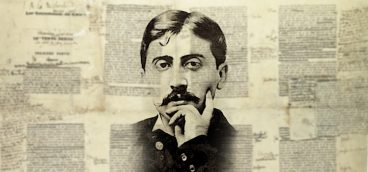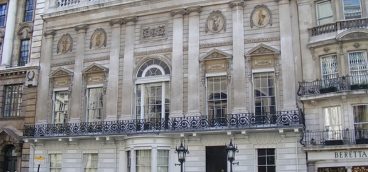The Mysterious Party

A few years after the events described in last week’s post, something happened that, at first, seemed to have nothing to do with Gilbert de Botton. I was sitting at my desk idly sorting through my mail when I came across an impossibly elegant invitation to a “garden party” being hosted by a very well-known woman I’ll call Ms. X.
I was naturally happy to be invited to such a swank affair, but I was puzzled about why I would be on the invitation list. I’d been in the same room as Ms. X once, about ten years earlier, but had never gotten within a hundred feet of her and we had, of course, never exchanged a word.
The only explanation I could come up with was that this “garden party” was going to be a major cattle call, with hundreds of invitees, basically everybody who was anybody, as well as a few of us who were nobody. That wasn’t appealing, but, on the other hand, the party was being held at Ms. X’s famous estate, and I was interested in seeing the place. I’d show up late, I decided, grab a drink and stroll around the grounds, then slip away unnoticed.
When I arrived on the appointed Sunday afternoon, nobody was there. Sure, there were half a dozen cars parked along the drive, but Ms. X probably owned at least that many cars herself. I pulled out the invitation to see if I had the wrong date, but as I did so a fellow in a butler’s uniform opened my car door.
The butler ushered me around to the back of the house where I observed no more than a dozen people standing around with cocktails in their hands and bon mots on their lips. My heart sank. I was single at the time and people I hardly knew were always inviting me to parties with the ulterior motive of introducing me to some hapless female. That had to be what this was about.
Except that, as I got closer to the little scrum of people, I could detect no unescorted females, hapless or otherwise. Was Ms. X fixing me up with herself? She was at least a decade older than I and, anyway, I didn’t want to marry her, I wanted her to adopt me.
I spent a couple of pleasant hours chatting with the guests, none of whom I knew, drinking excellent champagne, and chatting quite a bit with Ms. X., who turned out to be a lively and opinionated conversationalist. Then I went home and that, I thought, was that. The whole event was puzzling but apparently harmless.
Except that a few days later Ms. X called me and made an appointment to come in to see me, saying, “I have the most fascinating opportunity for you!”
Ah, the pieces now fell into place. Whenever someone told me they had a “fascinating opportunity” for me, what they meant was that they wanted me to write a very large check (fortunately, not on my personal account) in support of some worthy cause or other. That explained the garden party invitation and the long and lively chat with Ms. X.
Sure enough, when Ms. X came in she told me, “On the QT, Mr. Curtis, on the QT!” that she and a small group of like-minded people were planning to build a museum in Pittsburgh dedicated solely to the art of Andy Warhol. I had some serious concerns about the idea.
Sure, everybody knew that Warhol was born Andy Warhola and raised in Pittsburgh’s Oakland neighborhood (two miles from my house), that he graduated from Schenley High School (one mile from my house), and then got a BFA at CMU (when it was known as Carnegie Tech, half a mile from my house).
But so what? Warhol did his life’s work in New York City, a far larger town. Shouldn’t the Warhol Museum be there, perhaps in the original Factory building?
And how stable was a museum likely to be if it was dedicated to a single artist, even a very famous one? I knew there were many single-artist museums, but most were very small. There were exceptions, of course—Dali and Picasso, for example—but wasn’t it a big risk, especially if the single-artist museum was in Pittsburgh?
But Ms. X waved those concerns airily aside, noting that her group had commissioned a feasibility study for the museum idea and that they had already raised (via commitments) many millions of dollars from individuals, institutions, and even (she hoped) from the City of Pittsburgh and the Commonwealth of Pennsylvania.
Ms. X then reached into her bag and pulled out a smallish tablet on which she had written down the points she had wanted to make with me. Of course, she hadn’t mentioned one very important point, and I steeled myself for “The Ask.” How many millions would it be?
Ms. X leaned toward me and said, “Let me get to the most important point, and the main reason for my presence here today. I understand that you are a friend of Mr. Gilbert de Botton.”
Rendered momentarily speechless by Ms. X’s failure to ask me for a $10 million gift, I finally managed to admit that Gilbert and I had been business associates for several years.
“You see,” said Ms. X, “we very much want to attract Mr. de Botton to the board of our new museum. He collects Warhol and is chairing the board of the Tate [then known as the Tate Gallery, in London, now known as Tate Britain]. He would be such an important addition to our number!”
Ms. X didn’t just want me to introduce her to Gilbert, though of course she wanted that. She wanted me to accompany her to London to meet with him. “He’ll be so much more comfortable if he has a friend in the room, don’t you think?”
I didn’t think, but Ms. X was a very persuasive woman and the next thing I knew she and I were winging our way to Britain.





